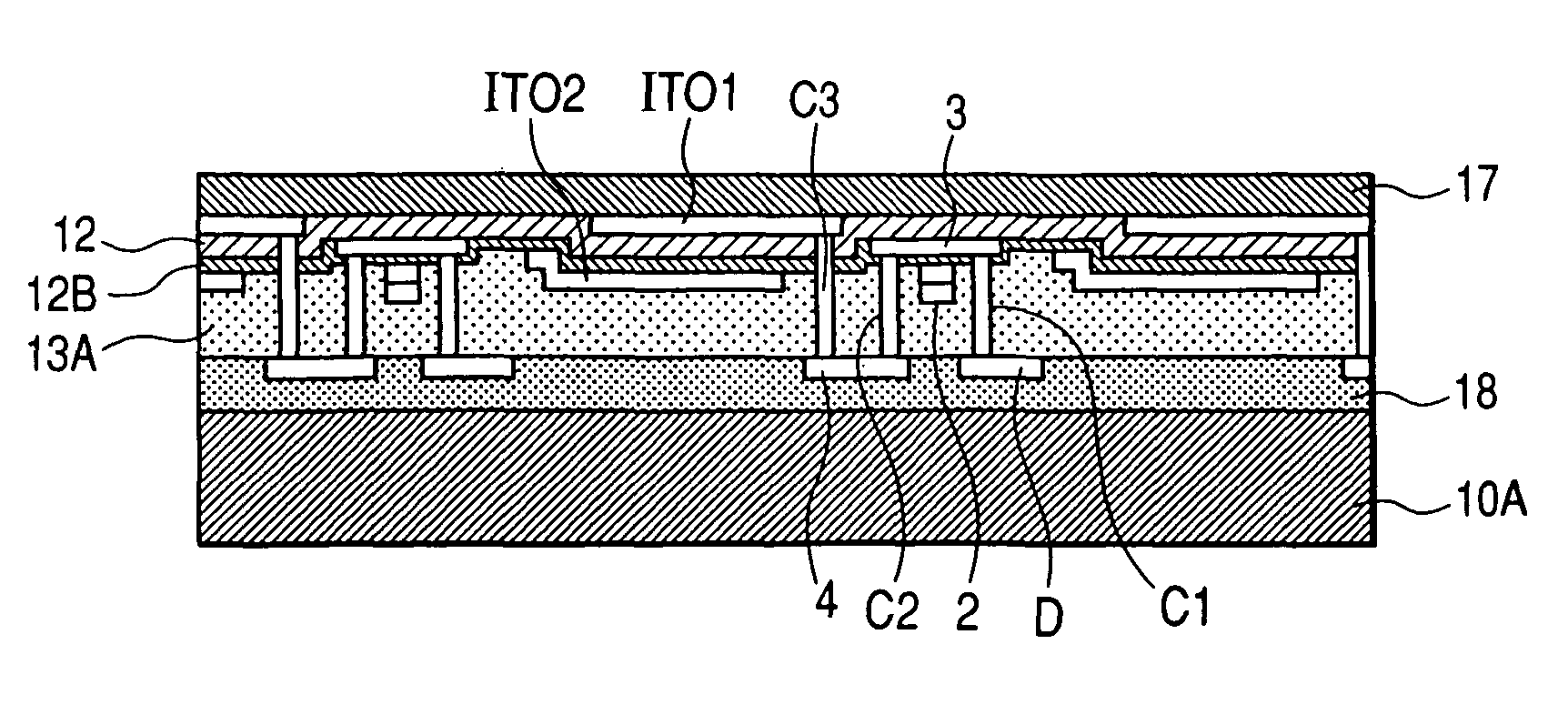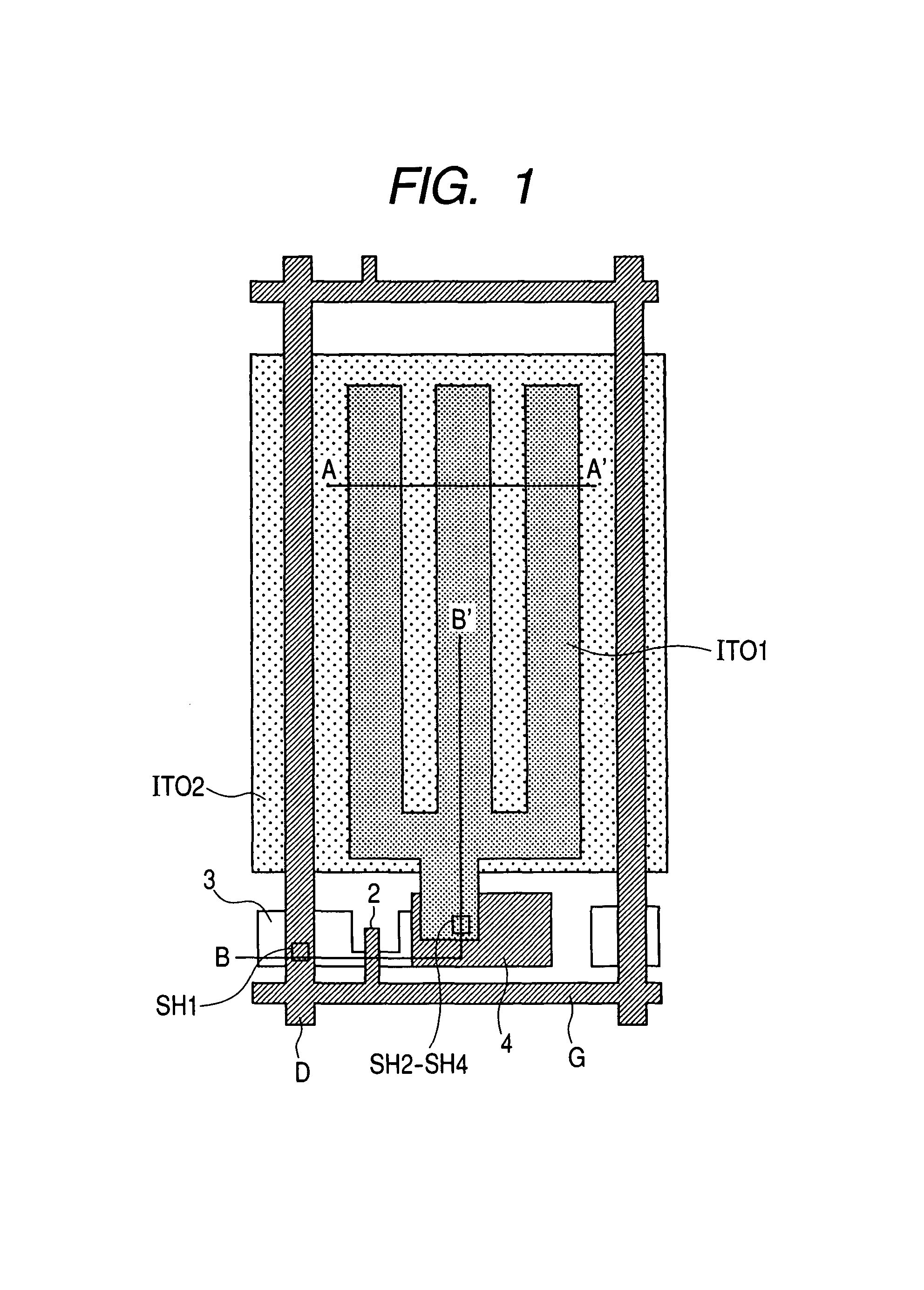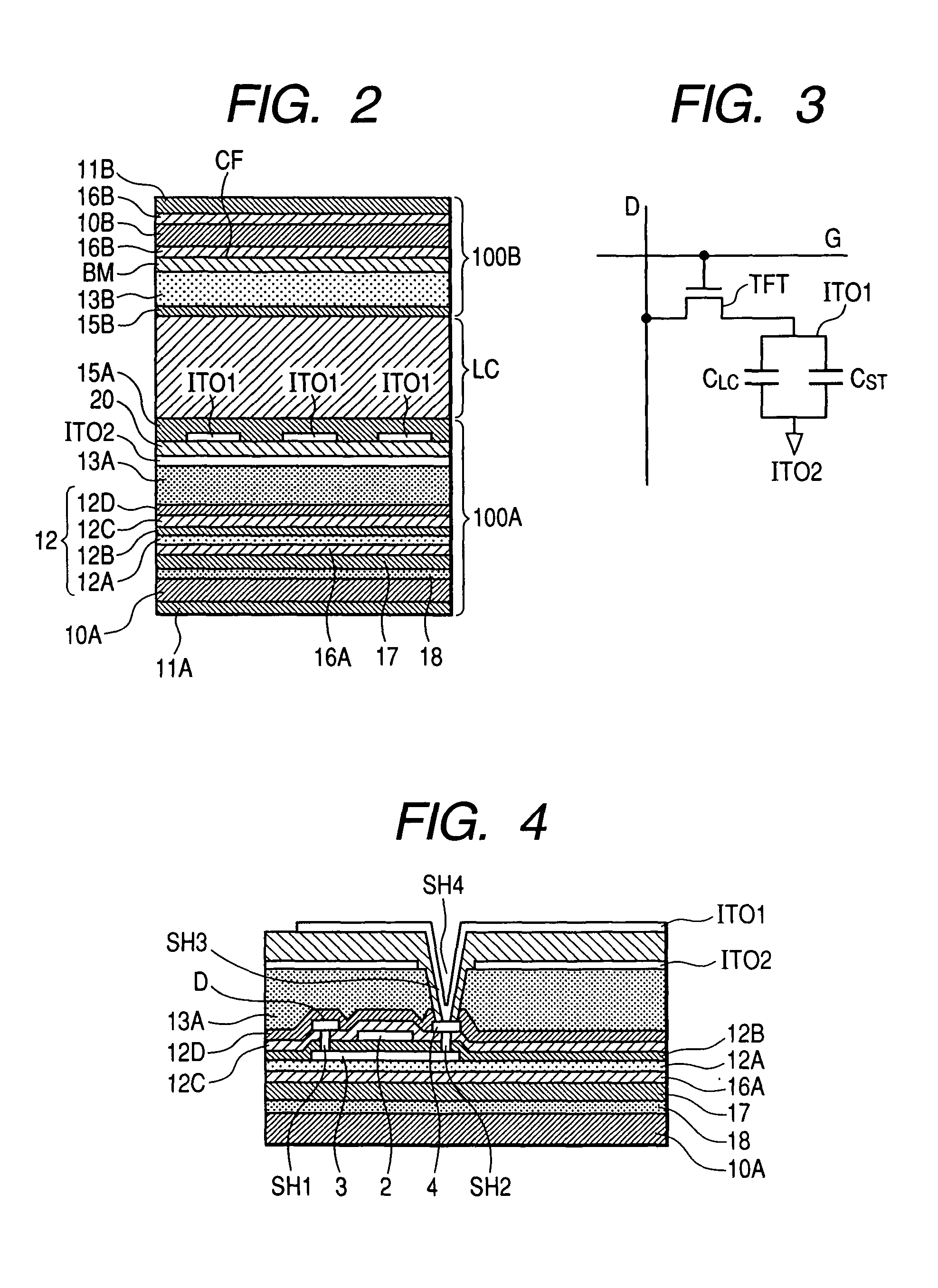Method for manufacturing thin film transistors
a technology of thin film transistors and manufacturing methods, applied in semiconductor devices, identification means, instruments, etc., can solve the problems of prone to cracking during manufacture, low heat resistance, and inability to use the current glass substrate line, so as to achieve the effect of reducing the cos
- Summary
- Abstract
- Description
- Claims
- Application Information
AI Technical Summary
Benefits of technology
Problems solved by technology
Method used
Image
Examples
first example
Manufacture of Heat Resistant Transparent Polymer Film (a)
[0153]A solution of polybenzoxazole precursor (VIII) in propylene glycol monomethyl ether acetate (PGMEA) / γ-butylolactone (BLO) (1 / 9) was spin coated on a quartz support substrate of 0.6 mm thickness. Then, pre-baking was conducted at 120° C. for 3 min to obtain a coating film of 5.5 μm thickness.
[0154]
[0155]Then, after baking by using an inert gas oven under nitrogen at 200° C. for 30 min, cure baking was conducted at 350° C. for 1 hour to obtain a polybenzoxazole film (B-1) as the polymer film (a) of the invention. The thickness after curing was 4.8 μm. The layer after curing was colorless and transparent.
[0156]
[0157]FIG. 17 shows transmission spectra in a region at a wavelength of from 300 nm to 800 nm of a cured layer obtained as described above. It was found that this cured layer showed transmittance of about 90% or higher in a range from 400 nm to 800 nm as a visible region. Further, it was found that transmittance of t...
second example
Manufacture of a Semiconductor Device
[0164]FIG. 1 is a plan view showing the constitution of 1 sub-pixel of a transmissive liquid crystal display panel according to an embodiment of the invention. FIG. 2 is a cross sectional view along line A-A′ shown in FIG. 1.
[0165]The structure of a liquid crystal display panel of this embodiment is to be described with reference to FIG. 2.
[0166]The liquid crystal display panel of this embodiment is an in-plane switching type liquid crystal display panel using a planar counter electrode, and the liquid crystal display panel has a transparent substrate (100B) and a transparent substrate (100A) arranged being opposed to each other by way of a liquid crystal layer LC. In this embodiment, the side of the main surface of the transparent substrate (100B) constitutes an observation side.
[0167]The transparent substrate 100B has a plastic substrate 10B and barrier layers 16B are formed to the upper and lower surfaces of the plastic substrate. On the side ...
third example
[0193]FIG. 6 shows a modified example for a method of forming a thin film transistor shown in FIG. 5 for the second embodiment. FIG. 6 shows a thin film transistor shown in FIG. 4 or FIG. 2 and a method of forming a liquid crystal device using the same.
[0194]In the same manner as the method shown in the second embodiment, a heat resistant transparent resin film 17 of the first embodiment was formed as a polymer film (a) above a glass substrate 19 as a support substrate. A barrier layer (inorganic layer) 16 was formed thereon in the same manner and a TFT portion was formed by a usual method in the same manner FIG. 5D. Then, an alignment layer 15A was formed and a rubbing treatment was applied.
[0195]SiON barrier layers of 100 nm thickness were formed on both surfaces of a plastic substrate 10B of 100 μm thickness and, using the same as a substrate, a black matrix BM layer and RGB color filter CF layer were formed by a usual method. The color filter portion 30 had an overcoat layer 13B...
PUM
| Property | Measurement | Unit |
|---|---|---|
| melting point | aaaaa | aaaaa |
| temperature | aaaaa | aaaaa |
| thickness | aaaaa | aaaaa |
Abstract
Description
Claims
Application Information
 Login to View More
Login to View More - R&D
- Intellectual Property
- Life Sciences
- Materials
- Tech Scout
- Unparalleled Data Quality
- Higher Quality Content
- 60% Fewer Hallucinations
Browse by: Latest US Patents, China's latest patents, Technical Efficacy Thesaurus, Application Domain, Technology Topic, Popular Technical Reports.
© 2025 PatSnap. All rights reserved.Legal|Privacy policy|Modern Slavery Act Transparency Statement|Sitemap|About US| Contact US: help@patsnap.com



